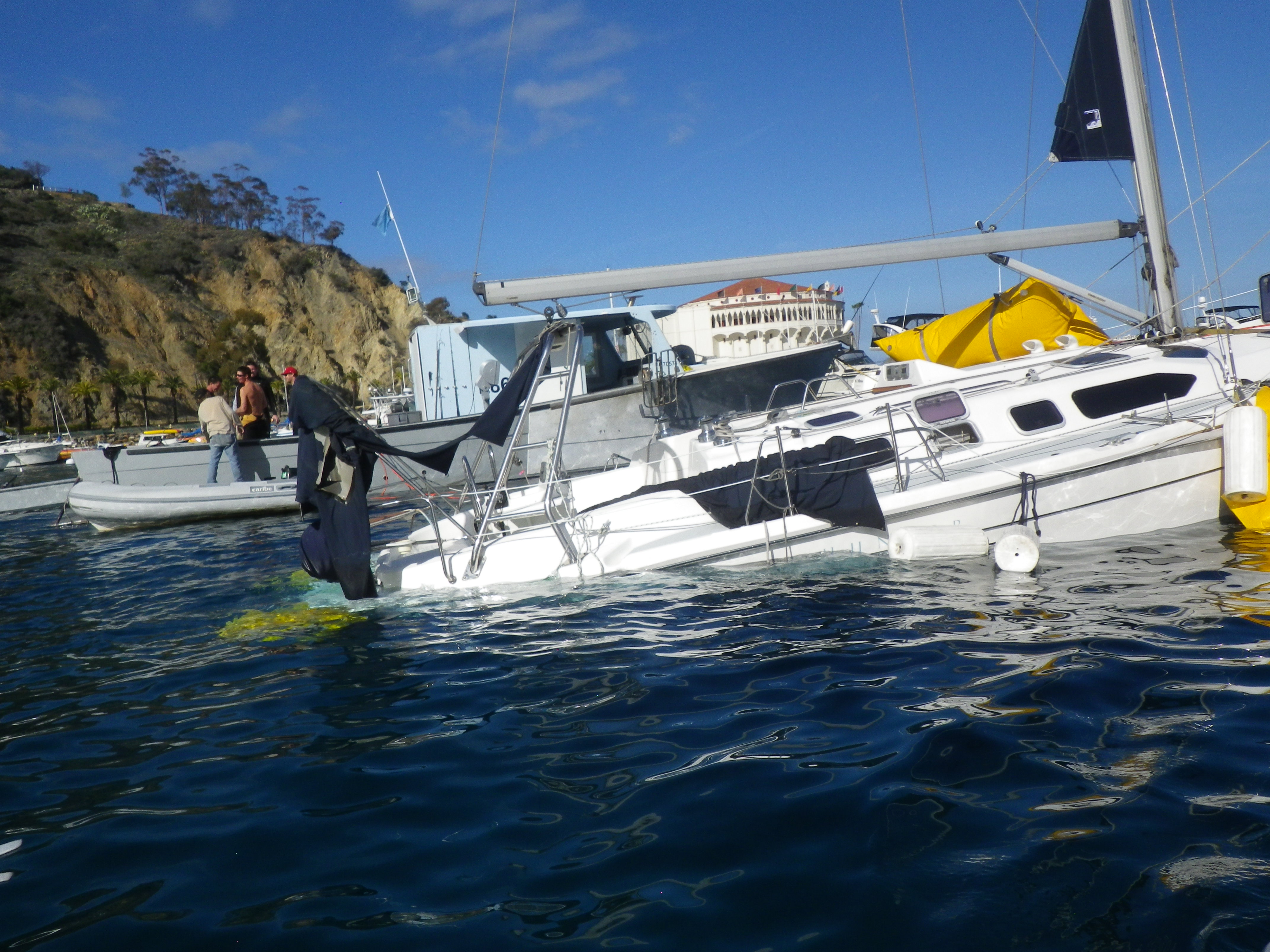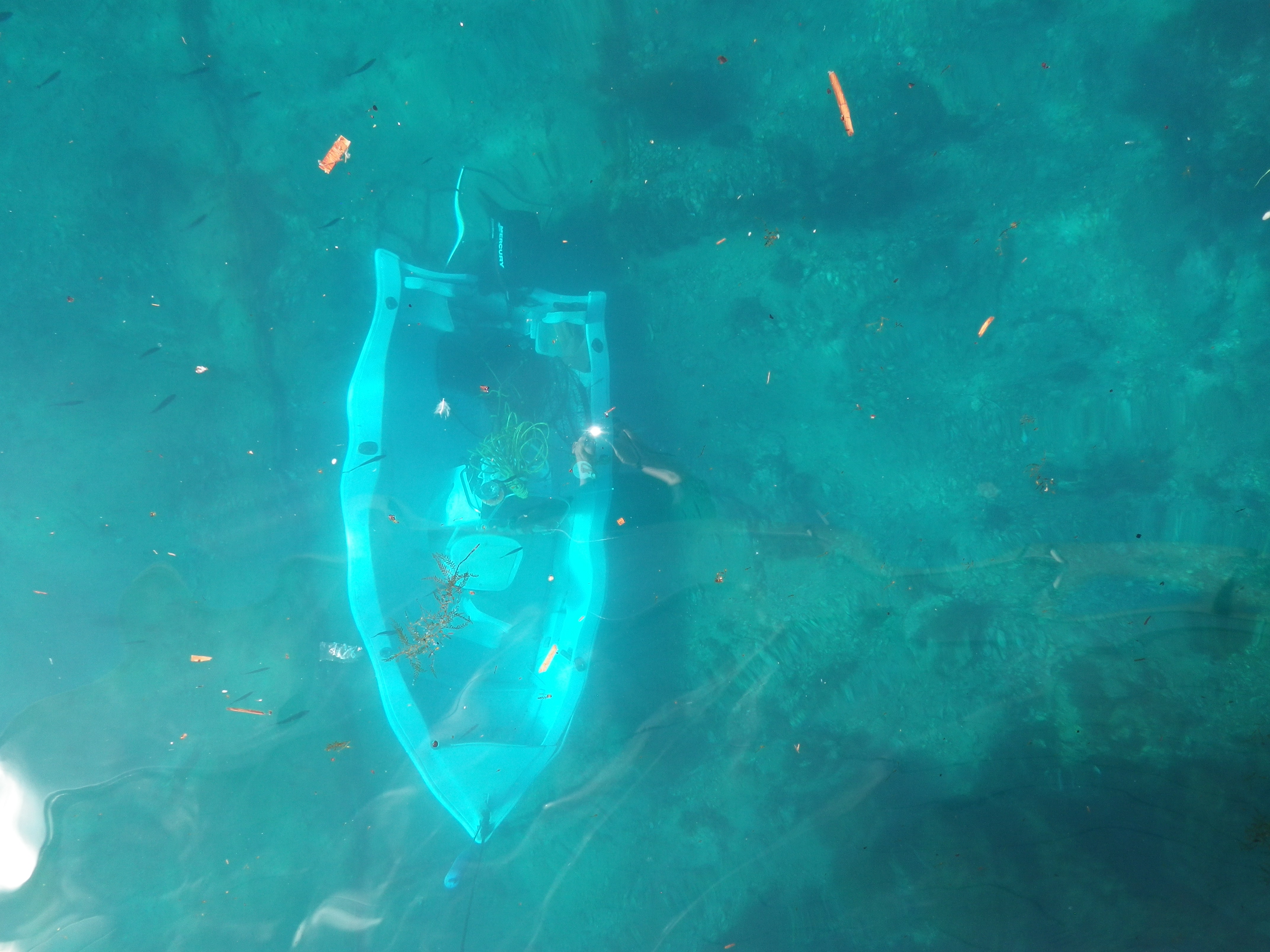On December 30, 2014 an unusual weather event struck the harbor in Avalon, Catalina Island. Storm conditions resulted in property damage and tragically, the loss of two lives. Boats can be replaced or repaired. Our most heartfelt condolences extend to families and friends of Bruce Ryder and Tim Mitchell.
Property damage included boats on the beach, one boat completely destroyed against the sea wall, one submerged sailboat and a Harbor full of sunken small boats and tenders. The damage was partially caused by “an act of God” as we say in the insurance business, but a storm like this is a good reminder of little things that can be done to reduce damage.
We should remain vigilant with our monitoring of weather forecasts. There are weather events that are sudden, but many weather patterns in Southern California are predictable. Make the right choice based on weather, your boat, your skill level and the intended voyage. Different harbors offer protection from winds from different directions. A strong wind over a long fetch (distance traveled by winds and waves over water) can cause real problems in an exposed Harbor. Move the boat early to a safe harbor, or a safer place in your harbor, before the storm is too intense, just as wise sailors know to reef a sail when the wind starts building. It is an important skill that comes with experience.
Mooring and dock lines chafe quickly in heavy weather conditions. Among the precautions we can take are strong, suitable lines and chafe protection. There are many new types of high strength lines, however some are too small to handle and do not fit well with existing hardware. Some lines age quickly in the sun. Ask a professional, switch out lines as needed and buy the proper type. Add extra lines if possible, easy to do at your slip, not so easy on a mooring. The concept of chafe protection is simple, but chafe protection that remains in place and is effective in heavy weather requires forethought and planning. Anti-chafing gear also requires monitoring during the event, another risky task.
Heavy weather exposes weaknesses in our boats. The hardware to which we secure our lines should be strong. Many boaters secure bow lines to their windlasses (not a good idea) and some sailors secure lines to stanchions (even worse idea). Many production boat builders  use nothing or only small washers as the backing for cleats and deck hardware. Naked nuts or small washers rip out relatively easily. Here is where the small things really matter, but the cost of a better built boat is significant. Building a cleat, chock, bit or any deck hardware, with a backing plate adds cost to the manufacturing process and is an extra that is not noticed by many boat buyers.
use nothing or only small washers as the backing for cleats and deck hardware. Naked nuts or small washers rip out relatively easily. Here is where the small things really matter, but the cost of a better built boat is significant. Building a cleat, chock, bit or any deck hardware, with a backing plate adds cost to the manufacturing process and is an extra that is not noticed by many boat buyers.
Homework: Look in your anchor rode locker or lazarette at the bottom of your cleats. Is there a backing plate? Do you have pieces of fire hose or garden hose that can be properly secured for chafe protection? Do you have a bridle that allows the force of the anchor rode to be split between two bow cleats? And the most important lesson from this recent storm, get the precious humans out of harm’s way.
For a first hand description of the storm and photos please go to bottomdweller.weebly.com and thank you to Daniel Sipes for allowing us to publish the website address.